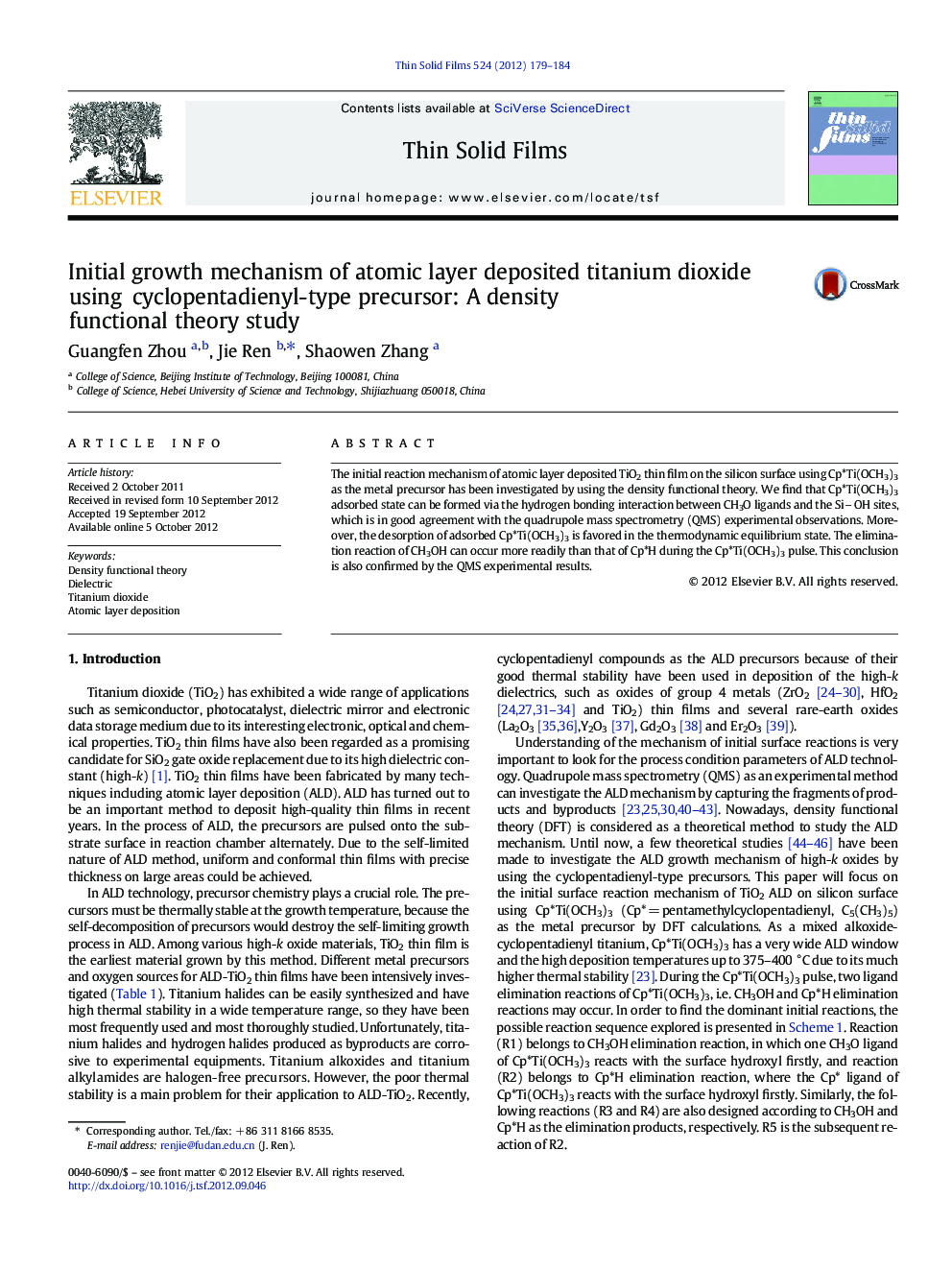| کد مقاله | کد نشریه | سال انتشار | مقاله انگلیسی | نسخه تمام متن |
|---|---|---|---|---|
| 1666575 | 1518080 | 2012 | 6 صفحه PDF | دانلود رایگان |

The initial reaction mechanism of atomic layer deposited TiO2 thin film on the silicon surface using Cp*Ti(OCH3)3 as the metal precursor has been investigated by using the density functional theory. We find that Cp*Ti(OCH3)3 adsorbed state can be formed via the hydrogen bonding interaction between CH3O ligands and the SiOH sites, which is in good agreement with the quadrupole mass spectrometry (QMS) experimental observations. Moreover, the desorption of adsorbed Cp*Ti(OCH3)3 is favored in the thermodynamic equilibrium state. The elimination reaction of CH3OH can occur more readily than that of Cp*H during the Cp*Ti(OCH3)3 pulse. This conclusion is also confirmed by the QMS experimental results.
► Initial reaction mechanism of atomic layer deposition of TiO2 has been studied.
► The Cp*Ti(OCH3)3 absorbed state on silicon surface is formed by hydrogen bonds.
► The elimination of CH3OH occurs more readily than that of Cp*H in Cp*Ti(OCH3)3.
► The Cp*Ti(OCH3)3 adsorbs on silicon surface via the CH3O ligand.
Journal: Thin Solid Films - Volume 524, 1 December 2012, Pages 179–184